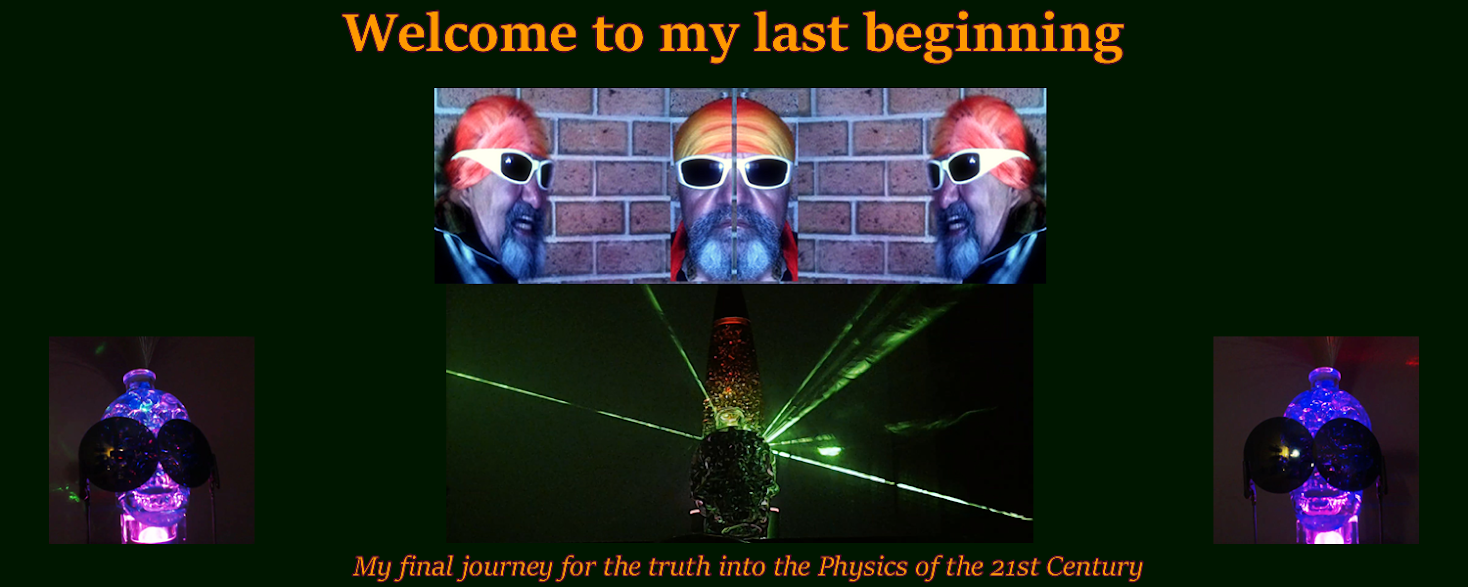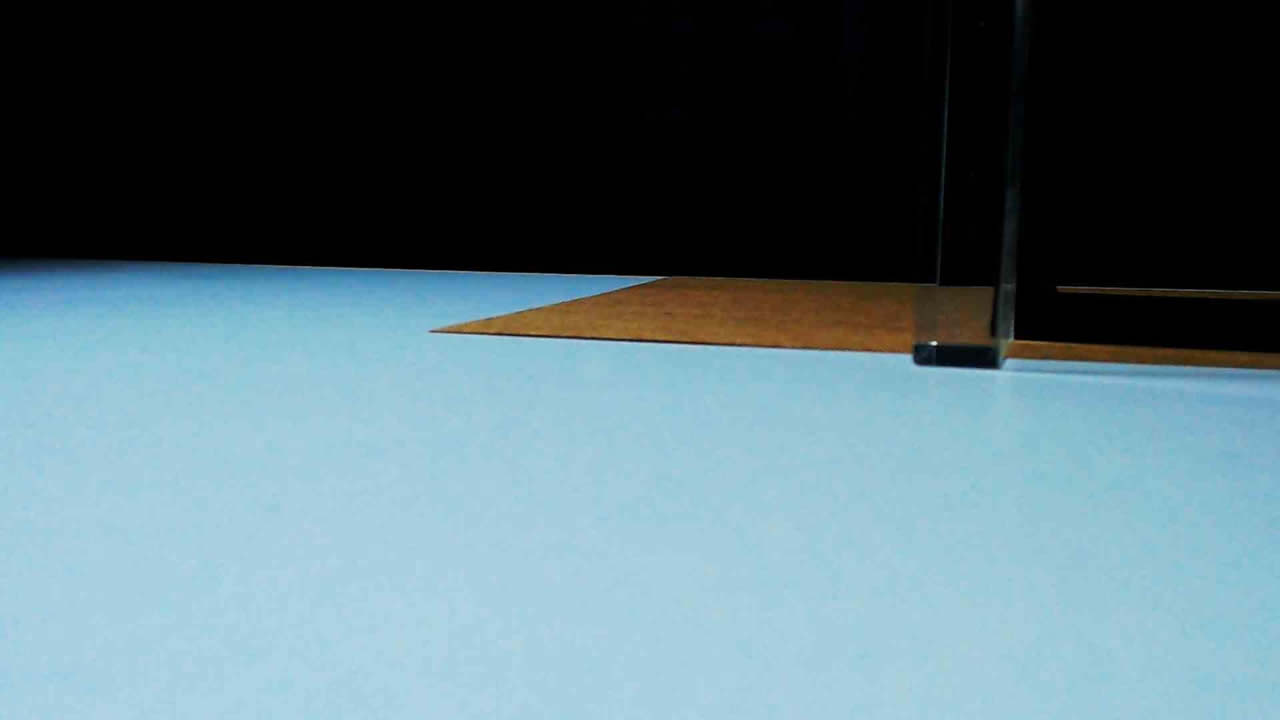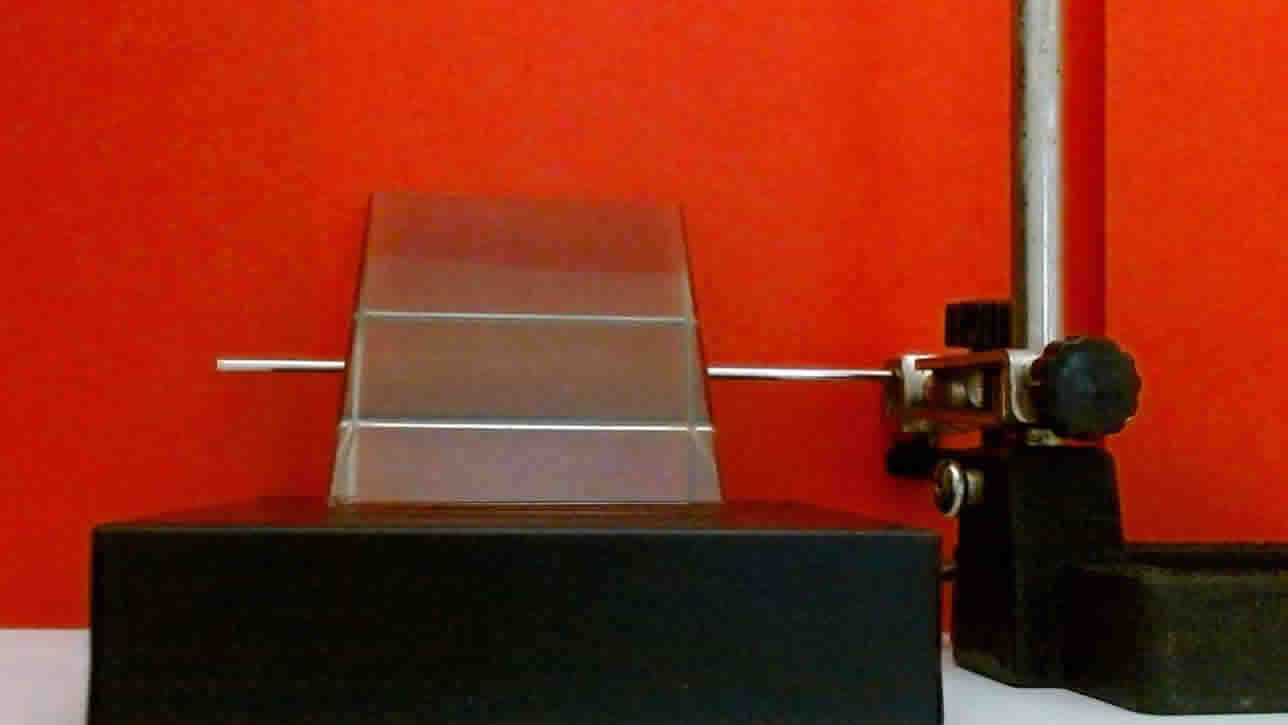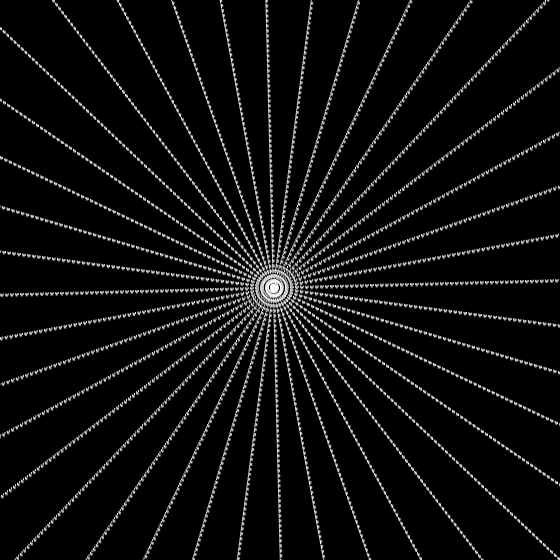There are two kinds of prismatic experiments: objective and subjective. Our entire understanding of light and colours is fully and unconditionally dependent and defined by those two kinds of experiments. This year marks exactly 350 years since Newton’s “...letter containing his new theory about light and colours” was published in the Philosophical Transactions, which is the event that introduced the Newtonian view of optics to the world, and which has remained ever since the mainstream theoretical understanding of all related phenomena.
In spite
of all the opposition that Newton’s theory has
faced in its 350-year reign there is not a single thing that has had
any significant effect upon the mainstream establishment, and
that basically means that, conventionally, we believe that Newton’s
theory is as valid in 2022 as it was in 1672. Now,
this 350-year-old status quo
may be deemed unjust by many today
(especially by those who believe that Goethe’s body of work is categorically worthy of an objective assessment and consideration). But the reality is that no decisive and irrefutable evidence has been brought forth as a truly viable alternative to the Newtonian view. Until today.
We have good reasons to believe that there is a decisive, conclusive, direct and simple way to find out once and for all if the Newtonian theory of light and colours is indeed the definitive descriptor of optical phenomena. This is the main objective of this post. In that quest we will present a number of simple prismatic experiments that will comprehensively test both Newton’s and Goethe’s theories, and ultimately unambiguously determine which, if either, is correct in their respective claims. The experiments that we'll present will address both objective and subjective observations, leaving in the process no room for any doubt about which (if either) of the two theories is a better descriptor of the optical phenomena.
The first experiment we’ll present consists of a subjective prismatic observation of a white rectangle placed upon a black background. (Figure 1)
What the
observer will see upon conducting a subjective observation of the
white rectangle in Figure 1 is thought
to be well known and
fully accounted by Newton’s theory. The reality, however, is
totally different to the conventional belief, as you will see in a
few moments. To that end, let
us first present you with the image that the observer will see upon
looking at the white rectangle through a triangular prism (prism
oriented with its apex pointing to the left) from
a distance of about 0.5m. (See
Figure 2)
The two figures above contain everything
we need to comprehensively determine which (if any) of the two
competing theories can correctly account for the result of our
experiment.
A Newtonian account of the image above
would begin with-and from-the argument that the rectangle under
observation appears white to the naked eye because the named
rectangle is actually formed by an infinity of superposed rectangles
of all spectral colours. This argument will then be followed thus.
When that apparently white rectangle is passing through a prism in
its way to the observer’s eye, all those infinite superposed
rectangles of different colours will be refracted (in the same direction, toward the prism’s apex) by precise and unique amounts for each
individual colour. Thus, if we take as an example only those four
coloured bands that are flanking the white rectangle, the R rectangle
is refracted the least (toward the apex of the prism), the Y one a
little more than the R, the C rectangle a little more than the Y one,
with the B rectangle being refracted the most. Finally, the Newtonian
account would say that the reason that only four colours are visible
through the prism is due to the fact that only those colours are not
superposed with any of the other myriad of rectangular spectral hues,
with the reason for the white display in the middle being the result
of all that infinity of colours being once again superposed upon
each other over that particular area of the image.
A Goethean account, on the other hand,
would argue that the reason for the image depicted in Figure 2, is
simply due to the fact that an observation through a prism of the
white rectangle will basically create a double image of the original
rectangle. Specifically, Goethe says that a prism refracts (or
deflects) the entire image of the object under observation in a
direction toward the apex of the prism, and the reason for those four
visible colours is due to the fact that in one instance we look at
the original white rectangle through a turbid medium (the
prism), whilst in the other we look at the dark background that
surrounds the original white rectangle, through a turbid medium (the
prism) that contains a white copy of the original rectangle.
In examining the process of the
experiment just given, we find that in the one case we have, to
appearance, extended the white edge upon the dark surface; in the
other we have extended the dark edge upon the white surface,
supplanting one by the other, pushing one over the other. (Paragraph 203 from Goethe's Theory of colour.)
The time has come to answer now whose theory can better account for the results of our experiment. First, though, let us state in advance that the answer to that question is both definitive and categorical. Now, the answer is… neither. Let us show you next why that is the case.
Incredibly, the reality is that neither Newton nor Goethe (nor anybody else, for that matter) seem to have realised that in order to make sure that one’s theory could correctly account for all prismatic observations, one must, before anything else, ensure that the position of any object under observation is precisely determined and known at all times and from all relevant perspectives. Otherwise, how could the experimenter, or the observer, determine to what extent and in which directions does a prism refracts (or deflects) any component of whatever the object of observation may be?
There are many ways of doing that. For instance, in our case the rectangle is placed right at the centre of the picture, and therefore any refraction would change those coordinates. We choose to employ another way, however, in which we place a green line along each side of the white rectangle. (See Figure 3) Green because objects of that colour are not deflected at all by a prism.
Next, we’ll look through our prism at the marked rectangle and thus find that the green lines are right on the borders between the R band and the Y one, and the C band and the B one, respectively. (See Figure 4) Thus we know exactly where the white rectangle is, which in turn means that we can now determine which-if any-of the two theories is correct.
First, Goethe’s theory fails in that quest because if it were correct the G line on the right side would have been laying on the border between the R band and the black background, and the other one would have marked the border between the C band and the white rectangular area at the centre of the image. (See Figure 5)
Second, the Newtonian understanding fails because in that case one of the G lines should be seen laying a little to the right of the R band and the other one a little to the right of the C band. (See Figure 6)

Now, if we examine carefully the image in Figure 4 we have no choice but to accept that the R rectangle has been refracted (deflected) in a direction toward the base of the prism. Needless to say, this is an extremely inconvenient fact, for it flies straight in the face of Newton’s theory. (And Goethe’s, as we know.) Nonetheless, the reality is that (at least) in subjective experiments R and B refract in opposite directions—with R towards the base of the prism and B towards its apex. And that’s not all, either. To that most inconvenient fact we also have to add the reality that G does not refract at all in a prism. (We’ll show that in a moment.) And if all those things weren’t enough, let us finally close this topic by stating that it is not only G that defies the conventional theory by refusing to refract in a prism: neither C nor Y do it, either.
It is easy to prove everything stated in the paragraph above, as you will see from the demonstrations below. First, we shall prove that R and B are refracted by a prism exactly as we have said. At the same time, we shall also prove the G is not refracted at all by a prism.
In Figure 7 we have an image of the white rectangle we have used in all our experiments thus far. Right under that white rectangle there are three other rectangles of the same width, but of different height (for convenience) coloured R, G, and B. Those three rectangles are all the superposed colours that are (in our understanding) needed, in order to account for all prismatic observations. If we now conduct a subjective observation of the image in Figure 7 (with the prism oriented as before—apex to the left—from a distance of about 0.5 m) we shall be confronted by an image like that shown in Figure 8. (Some typical prismatic artefacts are not shown.)

As you can see, the results of this experiment are categorical. The R rectangle has been deflected towards the base of the prism by an amount equal to the width of the C band. At the other end of the spectrum the B rectangle has been deflected in the opposite direction, towards the apex, by an amount equal to the width of the Y band. Finally, in the middle of the spectrum, the G rectangle has not been deflected at all from its original position. Just as I said.
There is no doubt that the refraction of the spectral colours in subjective observations does not happen as Newton and Goethe had imagined. The subjective refraction in a prism is not seen to happen in the same direction for all spectral colours, as both Newton and Goethe believed. It happens, instead, in opposite directions for the boundary colours and not at all for the central hue.
It had become manifest the fact that in subjective experiments a prism refracts the spectral colours in the same fashion as when one opens a Fan with one's hand: from the centre towards the sides, in both directions at the same time. To my mind that made perfect sense. It was a far more efficient process. It was more beautiful, simpler, faster.
In spite of all those revelations one thing continued, nevertheless, to haunt me long after completing my work in that particular matter. The thing that haunted me came in the form of one simple question: Why should those wonderful facts that I had discovered be factors of manifestation only in subjective experiments? Isn’t God the true epitome of parsimoniousness? Why would He then have such simplicity in one aspect of reality, yet so convoluted a story in its mirror counterpart? It was time to look deeper into the nature of objective experiments.
Subjective and objective spectra created in the same experiment










































.png)
.png)
.png)
.png)
.png)



